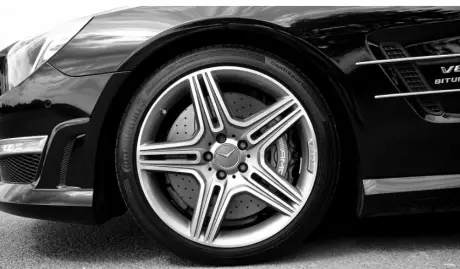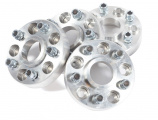
Drivers often confuse wheel backspacing and offset. While they are similar, they are not the same. Here we will sort out the differences between the two so you can make an informed decision when choosing new wheels for your car.
Wheel backspacing vs offset

Backspacing and offset are two of the most critical factors to contemplate when selecting custom wheels for your vehicle. Other characteristics, like diameter, width, load rating, and color can provide you with information about a wheel.
What is wheel offset?
The offset of a wheel is the distance between the mounting surface and the centerline. The offset can be positive, negative, or zero. Positive offset moves the mounting surface towards the outer edge of the wheel, while negative offset pushes it inwards. Of course, zero offset is just in the middle. What offset your car needs depends on several factors. First, you need to know the width of your wheel.
Second, you need to know how much space is available in your wheel well. For example, if you have a 6-inch wide wheel and your wheel well is only 4 inches wide, you're going to need a negative offset. The type of your car also plays a role. For instance, front-wheel drive cars generally need a higher offset than rear-wheel drive cars to prevent the wheels from sticking out too far and causing tire rub.
The offset also determines the stance of your vehicle. A car with a lot of positive offset will have its wheels sticking out past the fenders (known as "stance"), while a car with a lot of negative offset will have its wheels tucked under the fenders.
What is wheel backspacing?
Where the offset measures the distance between the mounting surface and the centerline, backspacing is the distance between the back edge of the wheel and the mounting surface. In other words, it's how far inwards the wheel sits. Backspacing is typically a positive value, though in specific cases - such as on dually pickup trucks - it can be negative. This alters the placement of the wheel significantly on the vehicle. For example, if you have a 6-inch wide wheel with 4 inches of backspacing, the mounting surface will be 2 inches away from the back edge of the wheel.
But do I want more or less backspacing? The amount of backspacing on a wheel determines how close it will be to the suspension and brakes. Too much backspacing is risky because the wheels could rub against these parts, but not enough backspacing means that the wheels are less protected from damage. That's why it's important to choose rims with the correct backspacing measurement for your vehicle.
What is the difference?
Backspacing and leading may either help or damage the appearance of your vehicle, but they have a much more vital function. They allow the suspension and tires to operate in tandem.

So, the very designation of these two terms - backspacing and offset - should give you a clue about their different purposes. Backspacing is about making sure the wheel is positioned correctly in the well so that it doesn't hit the suspension or fender. The offset, on the other hand, is all about how the weight of the vehicle is distributed over the wheels.
For instance, a 10-inch wide wheel's centerline is 5 inches. In case the wheel has a 6-inch backspace, then the offset is positive. However, a 4-inch backspace would make the offset negative. A positive offsetted wheel or one with greater backspace has to slide further into the wheel well for mounting purposes. Thus, the weight of the vehicle is forced back. A negative offset or less backspace causes the weight to be pushed forward.
While a vehicle's offset can alter its appearance, it does not have any effect on the function of the suspension or the position of the tire in the wheel well. The only thing that changes is how the weight is distributed over the wheels. In short, backspacing is critical for clearance, while offset is vital for weight distribution. With the wrong backspacing, your custom wheels will not only look terrible but could also cause serious damage to your car. Make sure you know what you're doing before you make any final decisions.
How can I find my car`s offset or backspacing?
In order to calculate and find out what offset and backspacing your auto has, you need to know the following measurements. Backspace, centerline, and offset can be difficult to understand without some explanation. Here are a few helpful tips.
Step 1: Measure the room in your wheel wells to see how much space is relative to the wheel hub.
Step 2: Backspace is equal to the distance from the back of the wheel to the wheel's mounting space.
Step 3: The centerline is actually the wheel width divided by 2.
Step 4: Offset is the Backspace minus Centerline, which will be positive or negative as you already know.

So, how much backspacing is an offset? The offset is 2 inches or 50 millimeters. A positive offset means the number is higher than half of the width. If it's lower than half the width, that would be considered a negative offset. To use an example, if your backspacing (the space from inner to outer edge) is 6 inches and the centerline was at 4 inches, then that makes for a positive offset. Thus, the offset would be +2 or 50 millimeters.
Now that you know how to measure and find out what your car's offset or backspacing is, you can shop for new rims with confidence! Just remember that a higher offset means the wheel will sit further inwards, while a lower offset will make the wheel sit further out. Choose wisely!
Will more offset cause rub?
Many drivers worry about offset because they think it will cause their tires to rub. If you don't get the offset or backspacing quite right when purchasing new wheels for a customer, they might sit too far inside the wheel well. This would cause issues like the inner edge of the wheel and tire rubbing up against the suspension.
The fact is that the wrongly selected offset or backspacing is just one of many things that can cause tires to rub. Other causes include suspension height, fender gap, camber, and even tire width. So, if you're concerned about your tires rubbing, make sure to check all of these factors before zeroing in on offset or backspacing as the culprit.
But how can you know how much offset is too much? Even if the tire and wheel have the appropriate clearance, an incorrect offset can reduce vehicle stability. On average, you should avoid using a new offset that is more than 5 millimeters different from the old one. Drivers who are particularly concerned about their vehicle's offset can use spacers to fine-tune the position of the wheel.
Spacers are devices that attach to the hub and create additional space between the wheel and suspension. They come in a variety of thicknesses, so you can choose one that gives you the perfect amount of offset. Just be aware that spacers can affect other aspects of your car's performance, so make sure to do your research before making any final decisions.
In conclusion, offset and backspacing are two very important aspects of choosing the right wheels for your car. Make sure you take the time to measure and calculate these numbers before making any decisions. And if you're ever in doubt, don't hesitate to consult a professional. They'll be able to help you choose the perfect wheels for your car.

Conclusion
Wheel backspacing vs offset is an important consideration when purchasing new wheels for a car. Backspace is the distance from the back of the wheel to the wheel's mounting space, while offset is the backspace minus the centerline. Many drivers worry about offset because they think it will cause their tires to rub, but this is just one of many factors that can cause tires to rub. The best way to avoid any problems is to make sure you measure and calculate the numbers before making any decisions. If you're ever in doubt, consult a professional. They'll be able to help you choose the perfect wheels for your car.
Same articles

What Are The Pros And Cons Of Wheel Spacers?
GuidesMost people don't know the importance of wheel spacers. Wheel spacers are an important part of any car, and they have a major impact on how your car handles. Wheel spacers...

How To Find The Right Wheel Spacers
GuidesIn order to upgrade your car wheels, you will need to get the help of a good wheel spacer. Wheel spacers are devices that are placed between your car's wheels and its body in order to create...

How Dangerous Are Wheel Spacers?
GuidesWheel spacers are a great way to change the look of your car, and they can also provide additional clearance for larger wheels or tires. However, if they are not installed correctly...